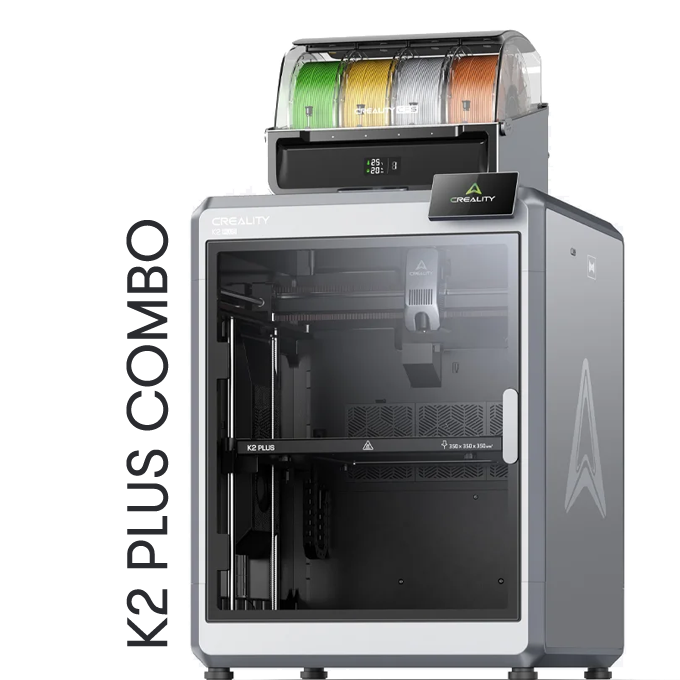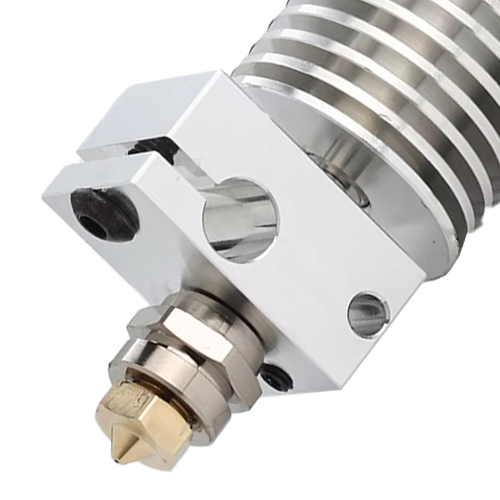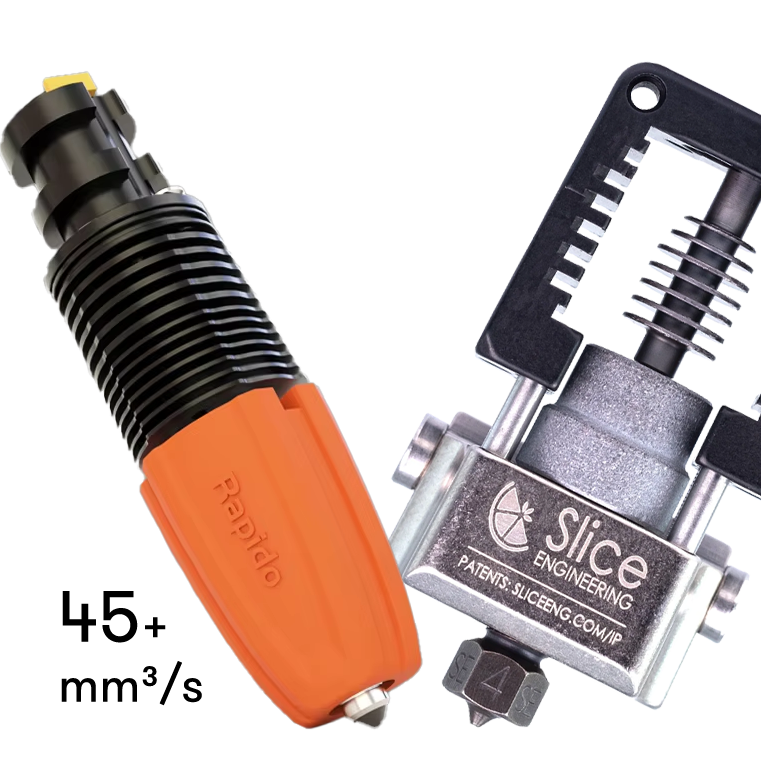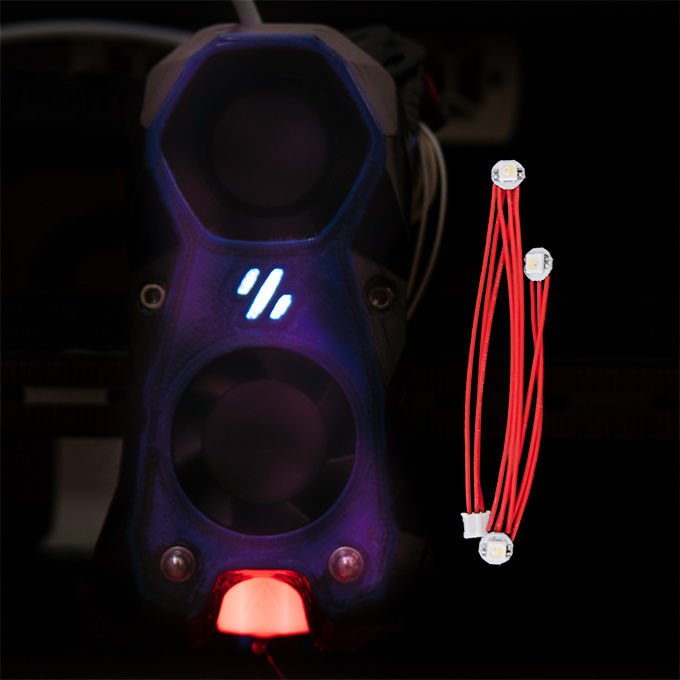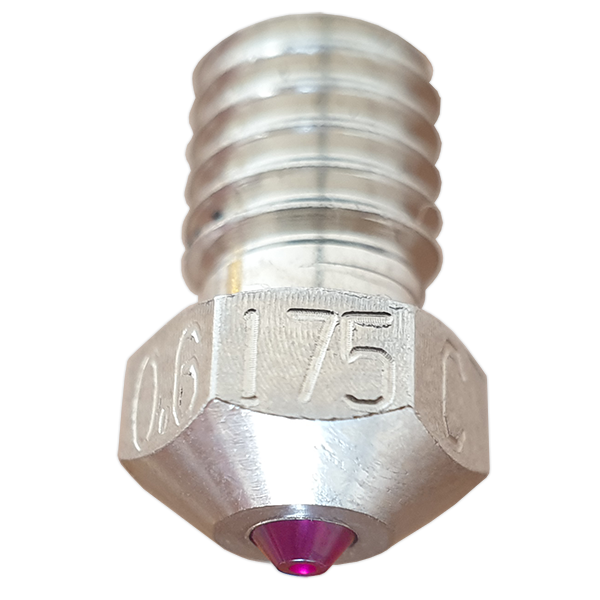A custom E3D V6 assembly is still the best value for money hotend in 2024. This statement may surprise you in the era of expensive equipment like the new e3d Revo, Rapido, Mosquito, Dragon, … yet is true.
E3D V6 dominated the market for many years. Its open-source design allowed many companies to contribute with improved products and components – heatbreaks, nozzles, heater blocks, etc. This enhanced ecosystem allows the assembly of a V6 hotend with either equal performance to the newcomers for half the cost, or with “normal” performance for much less.
E3D V6 assembly design
Before going in detail about various custom V6 assemblies let’s review the design and the critical performance components.
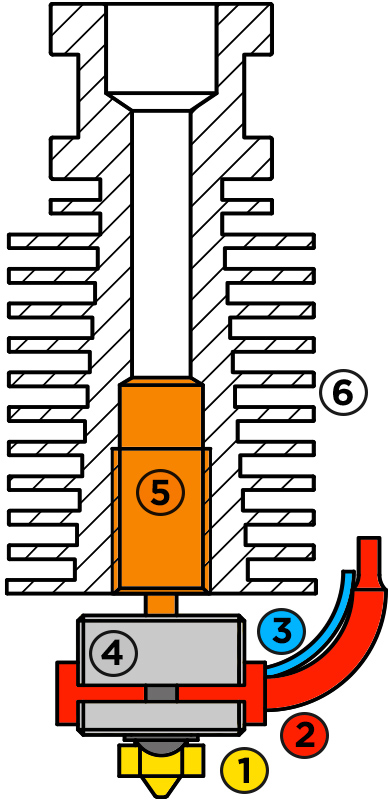
- Nozzle – the V6 nozzle choice is so huge that even the latest hotends are compatible and use V6 nozzles (RepRap M6). From ordinary brass nozzles to hardened steel, special treatment copper, and ruby nozzles – there is a solution for any filament and print temperature.
- Heater – 30, 40, 50, and 60 W heaters compatibility.
- Thermistor, high-temperature thermistor, or PT100/PT1000 probe compatibility to measure up to 500 C.
- Heater Block – from basic aluminum to brass and copper (up to 500 C)
- Heatbreak – initially an area of expertise of E3D, but now there are superior titanium and bi-metal heatbreak solutions from 3rd parties.
- Heatsink – great original design.
At this point, you may ask: – If the V6 offer is so complete and flexible, what are the advantages of modern expensive hotends like Mosquito, Dragon, and Rapido?
IMHO, their advantages are related to ease of use and high-flow 3d printing.
Ease of use is basically being able to replace the nozzle with one hand – you can just unscrew it and it won’t unscrew the heater block from the heatbreak. E3D V6 can’t do that. In order to change the nozzle you’ll have to use your other hand and hold the heater block in place (with a tool), while unscrewing the nozzle. This may be an important advantage if you change nozzles often, however, if you change the nozzle 3 times per year, well…
High flow (HF) or ultra-high flow (UHF) is the capability of the hotend to melt a lot of filament per second. Rapido UHF could theoretically reach 75mm³/s. That is important if you print with insane speed or with a very large nozzle. On other hand, if you print at speeds up to 150mm/s and nozzles up to 0.6mm, well… custom V6 will do. It would be useful to mention also, that high speed is important only for PLA and PETG filaments. Most other filaments don’t support higher speeds than 100mm/s.
Examples of custom V6 assemblies
Basic performance
Heatsink – $4.45
Heatbreak (Titanium Grade5) – $5
Heater Block (Brass) – $4.12
104NT-4 Thermistor (300C) – $2.51
40W heater – $2.30
Nozzle (Quality brass) – $3.31
Total: $21,69
This configuration is built with quality parts from Trianglelab and is more performant than stock E3D V6 – better temperature range of the thermistor, brass heater block with a better thermal conductivity than aluminum, titanium heat break, and more powerful heater cartridge. Perfect for non-abrasive filaments: PLA, PETG, ABS, TPU
Abrasive filaments
Heatsink – $4.45
Heatbreak (Titanium Grade5) – $5
Heater Block (Brass) – $4.12
104NT-4 Thermistor (300C) – $2.51
40W heater – $2.30
Nozzle 1 (hardened steel) – $11.63, or
Nozzle 2 (E3D nozzle X) – $28, or
Nozzle 3 (Tungsten Carbide) – $72
From $30 to $90
(depending on nozzle choice)
The same assembly as for the Basic performance except for the nozzle. A large offer of wear-resistant V6 nozzles is available to help you print abrasive filaments.
High performance
Heatsink – $4.45
Heatbreak (Bi-metal Titanium) – $22.75
Heater Block (Copper) – $9
PT1000 probe (450C) – $17.71
50W heater – $3.41
Nozzle (Bondtech CHT BiMetal) – $47.88
Total: $105
This assembly is high-temperature up to 450C, supports all filaments, and is high flow (tested 30mm3/s, probably can reach a bit more). Thanks to the CHT BiMetal nozzle a V6 outperforms a Volcano.
There are many other combinations available on the market, including Rubi and Diamond nozzles and high-temperature thermistors. Check also our review of the best Trianglelab nozzles.
Conclusion
Why this review? I came up with the idea of highlighting how reliable and good is a V6 assembly after replacing two heatbreaks of my Phaetus Dragon hotends in less than 6 months.
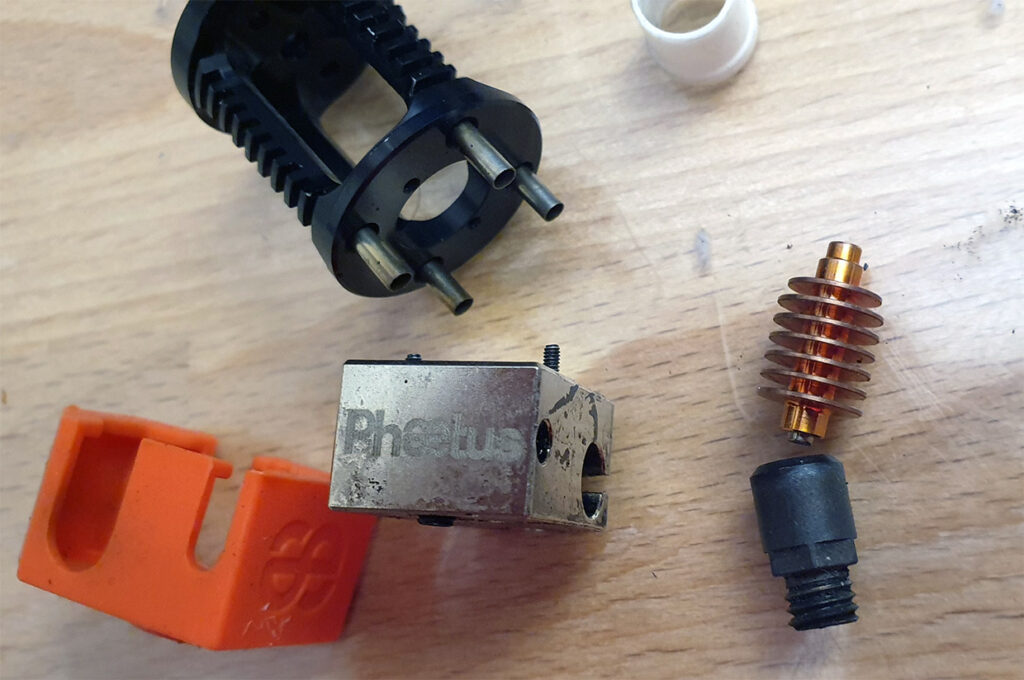
I’ll have to wait the replacement for at least two weeks. What saved my printer is my old stock of E3D components that allow me to assemble a reliable hotend.
This review shouldn’t sound like an old man’s nostalgia for the good old stuff. New is good, and innovation is good. It is just that sometimes innovation is packaged in too much marketing and added value that is not necessarily the value you need to make a better print. And while testing innovations, my fine-tuned V6 hotend continues to deliver day after day.

